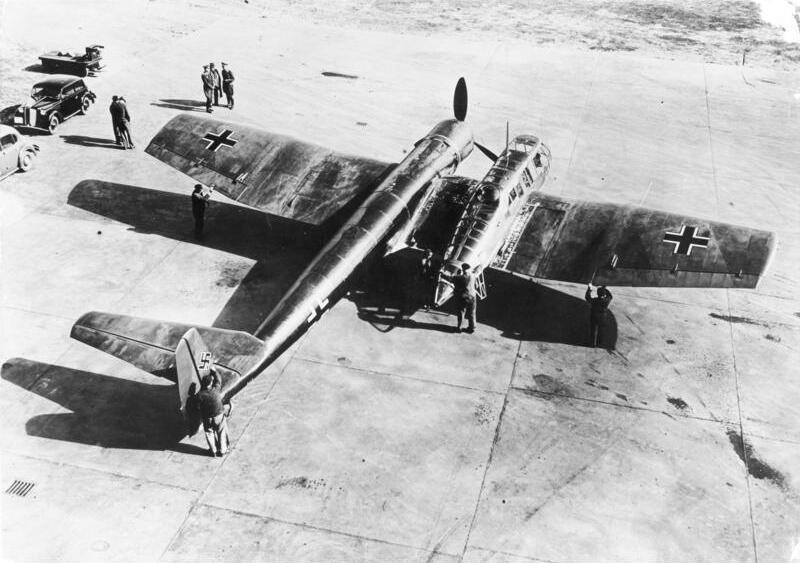The BV-141 looks like a kid had too many models, not enough patience

SUMMARY
The ungainly German BV-141 appeared like an ungainly swan, but it flew quite well and provided great visibility for the crew. It might have been a great reconnaissance plane for the German military, but luckily for the world, the Nazis selected a prettier design.
The start of the BV-141
The German Air Ministry solicited single-engine reconnaissance plane designs in 1937. As the aggressor, they knew World War II was coming. And they needed effective equipment to lead the assault.
Most manufacturers proposed traditional symmetrical designs. But Blohm & Voss, a well-respected manufacturer of flying boats, entered an asymmetrical design. It featured a fuselage with an engine and a separate crew compartment mounted to the right.
That separate crew compartment had great visibility, lots of elbow room, and strong stability at the low speeds preferred for reconnaissance. It boasted a 248 mph top speed, could reach almost 30,000 feet, and had a 700-mile range.
And while the plane looked lopsided, the forces on the plane were actually better balanced than most single-engine planes. In propeller planes, the force of the engine pushing the propellor causes a slight counter-roll in the rest of the plane. The flow of air coming off the propellor is slightly higher on one side of a standard propellor plane than the other. These two forces cause the plane to try and roll and yaw.
In the BV-41, the asymmetric weight counteracts the asymmetric lift and propellor force, making it more stable.
The plane might have been a game-changer. The range, especially, showed potential. The eventual winner of the competition, the Fw-189 from Focke-Wulf, could fly only 580 miles, almost 20 percent shorter.
While focused on reconnaissance, the three-person crew had four 7.92mm machine guns, two forward and two aft. And it could carry four bombs.
Ugly duckling BV left behind
Despite the favorable stats and flight characteristics, the BV-141 didn't get far. Ernst Udet, the Nazi director of research and development for the Luftwaffe, liked the plane. But everyone else, including the head of the Luftwaffe, Hermann Göring, trashed it.
Göring couched his dislike of the plane as an issue of low power. It might have been true. He did eventually select a twin-engine plane for the role, the Fw-189, even though it didn't fit the solicitation criteria.
The Blohm & Voss team, heartened by Udet's support, continued to develop the design but could never win over their detractors. The company eventually constructed between 13 and 19 prototypes with changes to cockpit placement, changed landing gear, and more powerful engines. The BMW 801 engine pushed the updated design to 272 mph with a range of 1,200 miles. But the team was ordered to stop development to focus on the production of their rival's designs.
Similar twin-fuselage planes
The Air Ministry did revisit the fun design in 1943 when it asked the company to develop a similar plane, the Bv-237, which would have focused on dive bombing or attack. But material shortages sidelined the efforts again.
We'll likely never know if the plane would have outperformed on the battlefield.
But there were other planes with twin fuselages in the war, like the Henkel He 111Z. America finished the F-82 Twin Mustang too late for World War II, but it fought in the Korean War. And none of them were as weird as these nine.
SHARE
